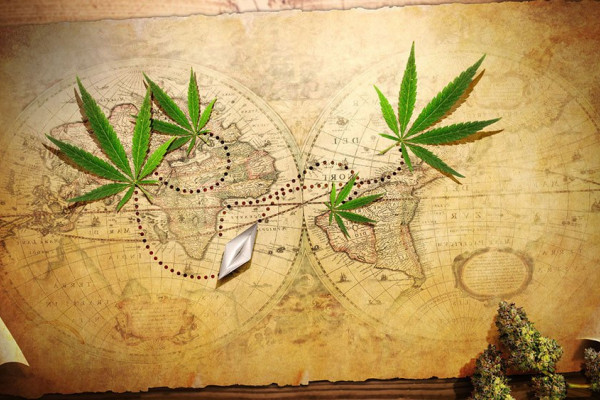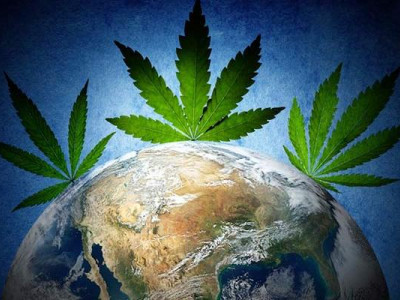0.00 грн.
CheckoutThe history of cannabis as we know it now

Since 1961, when a single UN convention on narcotic drugs decided to ban cannabis, the world history of marijuana has received a new round. Previously, most of the varieties of this agricultural plant went to the production of fabrics and oils, but after that all hemp turned into a dangerous drug and fell under a worldwide public ban.
Despite the negative attitude towards cannabis, its followers continue to revere the medical and relaxing properties of the plant, citing the lack of awareness of the majority. Coffeeshop® offers insight into where the history of cannabis went downhill.
From the beginnings to the present - the history of the demonization of cannabis
- 8000 - 6000 BC e. The first records of the use of the plant are over 8,000 years old. Civilizations of the past that cultivated hemp used it as a source of food, fibre, oil, and paper. In chinese medical handbooks dated 2700 BC, they call marijuana a medicinal plant and recommend its use in the treatment of constipation, malaria, rheumatic pains and female ailments.
- 2000 - 500 BC e. According to the official history of the origin of marijuana, in India for more than 1,500 years, it was one of the five sacred plants. On the territory of modern Europe, marijuana appeared around 500 BC. e., where she settled, becoming the same source of fiber, oil and mental relaxation.
- 500 - 100 years BC e. The Chinese are actively engaged in the manufacture of hemp paper.
- 1533 AD e. King Henry XII of England motivates farmers to grow hemp: he issues a decree according to which everyone who does not cultivate it is fined. This is how progress was encouraged in the Middle Ages.
- 1600s. Hemp is actively used in North America for the production of ropes, shoes, and clothing.
- 1700s. America's Founding Fathers advocated nationwide cannabis cultivation.
- 1942 Henry Ford creates an experimental hemp body. It is 10 times stronger than steel of the same thickness.
This is only a small part of the history of hemp cultivation in the world. This plant has lived for thousands of years next to humanity, has been beneficial, used in everyday life, medicine and religious ceremonies. But in the twentieth century, the guardians of the law began to look closely at marijuana especially closely.
Politics and cannabis are inseparable
This is exactly the impression one gets when one plunges into the history of marijuana. The first ban on the use of this plant was documented in 1914. He was accepted into Texas because of the Mexican emigrants who crossed the border illegally and in huge numbers, bringing with them "crazy weed."
Public conservatives rallied, and by 1937 cannabis was banned across America. Now it is difficult to say what was worse - the ongoing invasion of the Mexicans or their love for the marijuana that they brought into the country. However, after the ban, it became much easier to judge them by American laws.
What happens to substances that are prohibited at the legislative level, but remain inside the country? That's right - they go underground. There, in the underground, was not only marijuana, but the entire black population of America. The hatred of whites for blacks, combined with the ban on marijuana, did their job - American prisons filled with Mexicans began to fill up with African Americans who were attracted for possession, cultivation and distribution of cannabis without trial or investigation.
Grass and hippies
In 1961, the flower children, pardon the pun, flourished and were the top users of marijuana. But if it seems that these people were constantly stoned and did not understand anything, it is worth clarifying that during the official ban on cannabis, breeders from all over the world developed its “strengths” so much that we can safely say that the old hippies did not even dream of coming from today's marijuana .
In the 1960s, breeders were just beginning to show curiosity about the drug THC, which is what causes the intoxicating effect. And at that time, its content varied from 0.3 to 4%. In modern marijuana, it has long exceeded 20%, and especially mind-blowing strains can boast of a 30% THC content. In the 60s, to get the same level of mental pleasure, you had to ganja in inhuman quantities. So modern rastamans should thank social progress in general and breeders in particular for their hard work.
How Cannabis Lived in America in the Second Half of the 20th Century
In the 70s, after the hippie era, American President Jimmy Carter launched a program to decriminalize cannabis. But Ronald Reagan, who came to replace him, agreed with the opinion of conservatives and called marijuana "perhaps the most dangerous drug in the world" and banned it again.
Since then, law enforcement agencies in the United States have spent billions of dollars to fight marijuana. In 2020, more than 800,000 Americans were arrested because of it, with 90% of them jailed for possession. This is a very large number of able-bodied population that could continue to participate in social life and pay taxes. Where are they sitting? Prisons began to be built with renewed vigor in order to put a malicious smoker there with 3 grams of marijuana in the glove compartment.
Where the grass is greener - what is happening with legalization now
- In 1985, the US government approves the use of a synthetic form of drugs containing cannabinoids. They are prescribed after chemotherapy, patients with HIV and AIDS.
- In 2001, Canada became the first G7 country to pass a national law on medicinal marijuana. Since that time, a select group of people have been able to legally grow and consume cannabis.
- In 2014, US President Barack Obama signs an executive order allowing farms to grow certain varieties of cannabis.
The Netherlands, Israel, Greece, Croatia, Poland, and Finland followed the same path. It is allowed to take cannabis for medicinal purposes. Despite the fact that the history of cannabis in Ukraine is no less rich than in the United States, even medical strains are still far from being legalized here.
Is cannabis really a deadly drug?
Any study of marijuana is strictly controlled, in which country it would not be carried out. Every scientist who researches cannabis must be constantly examined by a necrologist and receive a plant for experiments exclusively from government-approved sources. In many countries, it is not easy to get even hemp seeds, even though they do not contain drugs. For example, you can buy feminized marijuana seeds in Ukraine, but only as a souvenir. There are only a few countries where the study of marijuana is like real scientific research, such as Israel or Canada.
Scientists certainly complain about this, because they have to work with plants of dubious quality, which in real life would not be smoked by any Rastaman. It remains to be seen whether these studies are justified and whether their results can serve as the basis for sentencing all varieties of cannabis.
